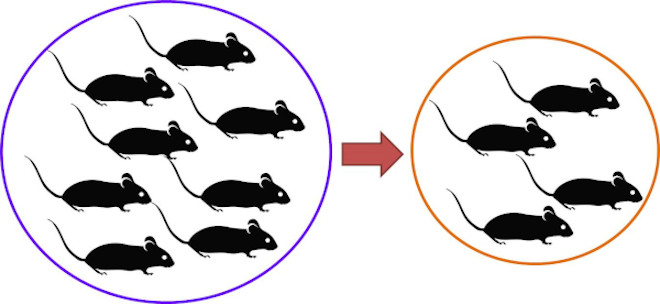
The 3R’s at Karolinska Institutet
The 3R’s are a concept that was established by Russell and Burch. It encompasses different aspects regarding the use of laboratory animals (rodents and rabbits) in biomedical and toxicological research. Probably most of you are already familiar with this concept. If no, during this blog I will discuss the main key points of the 3R’s. I will also make special emphasis on why the 3R’s are of vital importance during your studies at KI. Finally, I will discuss on its relevance in the European legislation.
Replace
Replacement is the first “R” and it refers to the use of non-animal experimental models. This implies that instead of using rats or mice for a research project, you can use invertebrate animal models. Such models can be replaced by Drosophila or C. elegans (nematode), cell lines, 3D organs, tissue cultures or computational tools. This is very important because nowadays the new technologies and novel in vitro methods make possible the full or partial replacement of laboratory animals in the research field.
Another important aspect to consider for replacement is the animal welfare. In the past decades concern for animals’ welfare has increased and with it the need of migrating to other models. The aforementioned should be one of the first things to consider during the design of an experiment. This is because the 3R’s are tightly hardwired in the European legislation (Directive 2010/63/EU). One of their main criteria is to opt for non-animal methods as long as the type of project allows it. Finally, replacement of animal models also relays on economical and practical aspects. Working with animals implies maintenance (money) and dedication (time), while using invertebrates or in vitro models optimises costs and times.
Reduce
Reduction is the “R” that must be taken in consideration when the type of research does not allow replacement. Reduce implies using less number of animals obtaining the same amount of information. In addition, it involves using the same number of animals obtaining much more information. It also involves the reuse of animals in the same experiment to reduce the total number of used rodents. For example, if you work with Immunology models it is usually not possible or easy to replace animal for non-animal models. For this reason the experiment design must be directed to the reduction of animals used.
This can be a tricky task because of the statistical power of the experiment. During animal research it is important to use fewer animals but at the same time have enough for acquiring a correct statistical power.

Refine
Refinement is the “R” regarding laboratory animals’ welfare during research projects. Refine refers mostly to the methods and techniques that minimize or reduce pain, distress and suffering in laboratory animals. As I already mentioned before, animal welfare has gained a lot of attention and importance in the past few years. For this particular reason, the European legislation (Directive 2010/63/EU) has implemented refinement criteria in its regulations for research involving laboratory animals.
Some of these criteria involve proper husbandry and housing conditions (this will vary depending the species). Other criteria involve proper diet, acclimatization periods, and training of the animals in order to make them cooperate with some procedures (injections and blood samplings), Finally, some critical aspects encompass appropriate approaching, handling and restraining techniques (also varies depending on the species), provision of analgesia and anesthesia and health monitoring. To obtain an approval for a project using animals, it is mandatory to state and justify the conditions to keep the animals and the classification of expected suffering. This aims to optimize the animal’s welfare during the project and at the same time guarantee good experimental quality.
3R’s implementation in research and education at KI
If you are Biomedicine (bachelor/master) or Toxicology student, you are going to hear about the 3R’s during your whole programme. This is because at KI the 3R’s are one of the most important principles for education and research at all levels. The 3R’s implementation is not only about good Science but also about ethics.
This implies that Karolinska Institutet has the duty of teaching and preparing the alumni for working ethically in projects that might involve lab animals. One of the courses which puts special emphasis on this aspect is: “Laboratory Animal Science in Theory and Practice”. In this course you will understand how the 3R’s implementation, especially Reduction and Refinement. If you want to learn more about 3R’s and how to design and prepare an optimal experiment you can visit NC3Rs and NORECOPA.
I hope this blog had been illustrative and helps you to understand the impact that Replace, Reduce and Refine have in Science at KI and Europe in general.
If you have questions or concerns about this topic don’t hesitate and contact me!
Aline Colonnello: gloria.aline.colonnello.montero@stud.ki.se
Aline Colonnello - Toxicology
My name is Aline Colonnello Montero, I am twenty five years old and I come from the wonderful but busy Mexico City. I consider myself to be a perseverant person who works hard to meet all my goals and ambitions. I have a bachelor’s degree in Biology and I currently study the Master’s programme in Toxicology at Karolinska Institutet. My job as part of the digital ambassadors’ team consists on writing blogs

0 comments